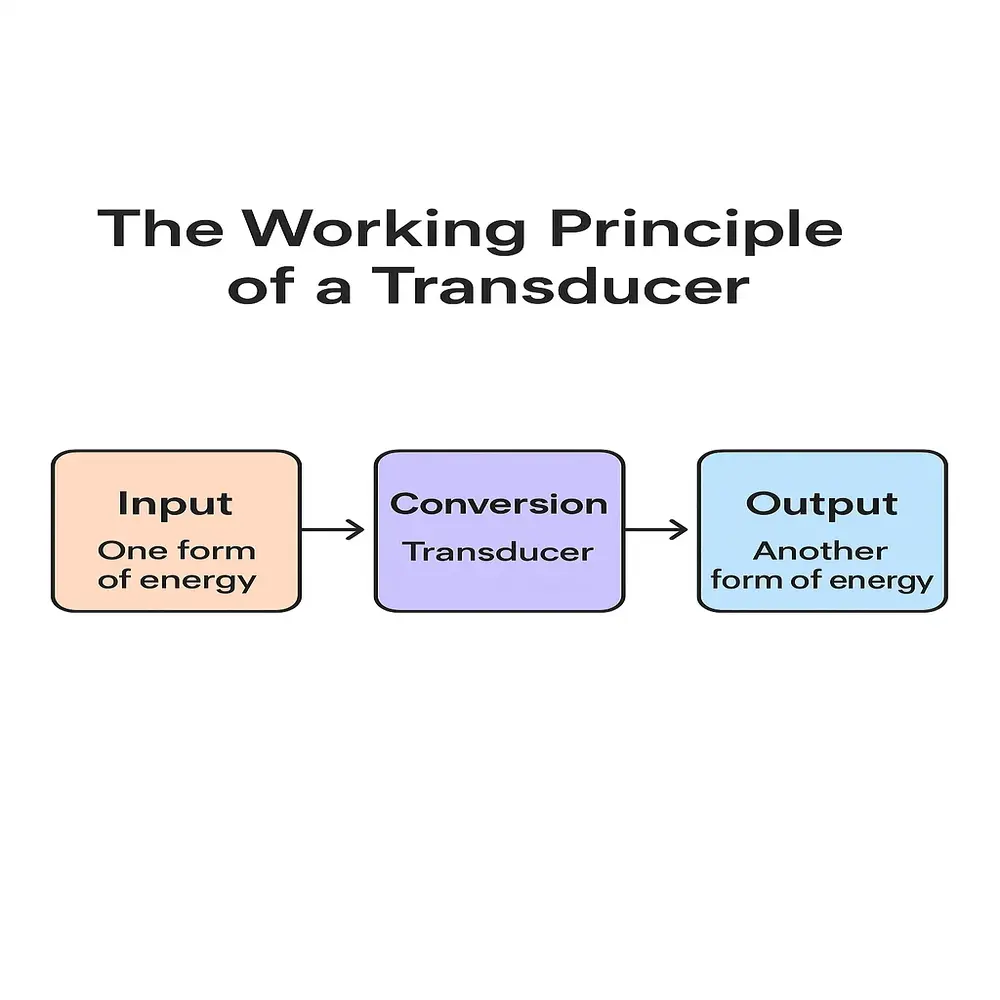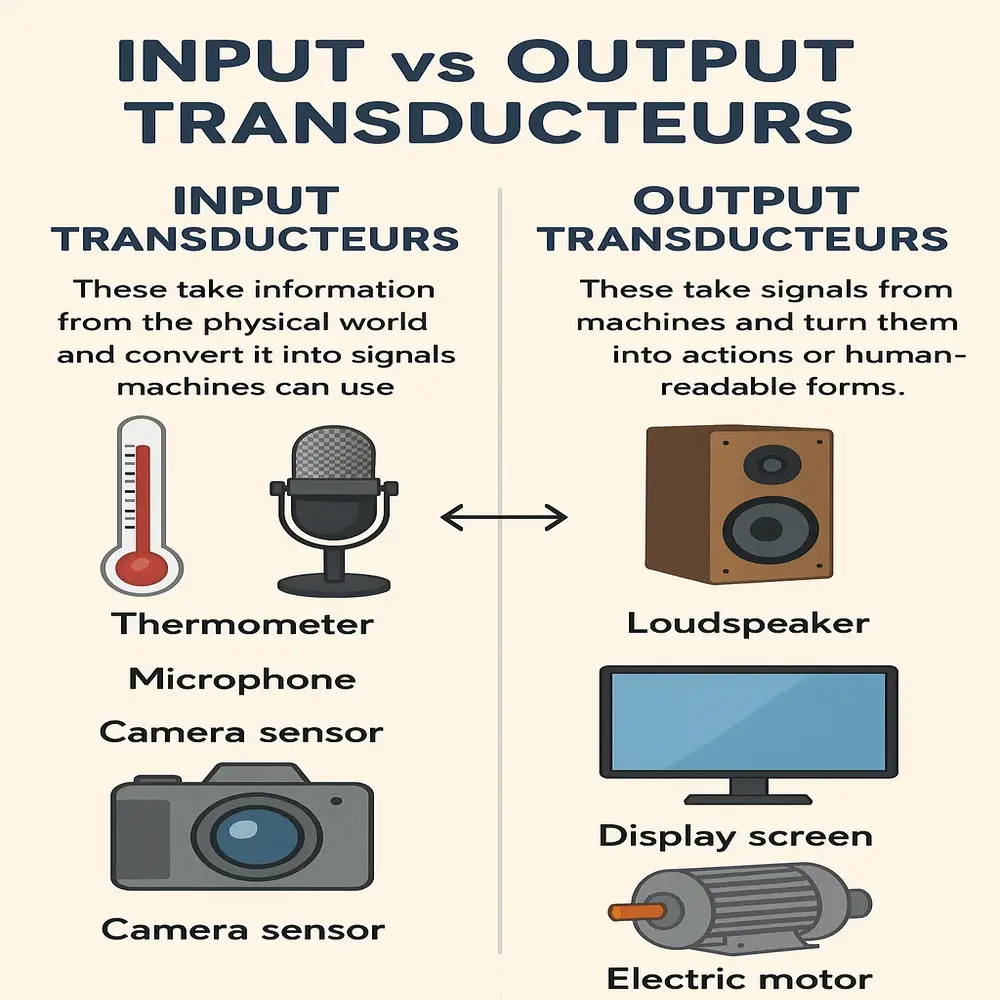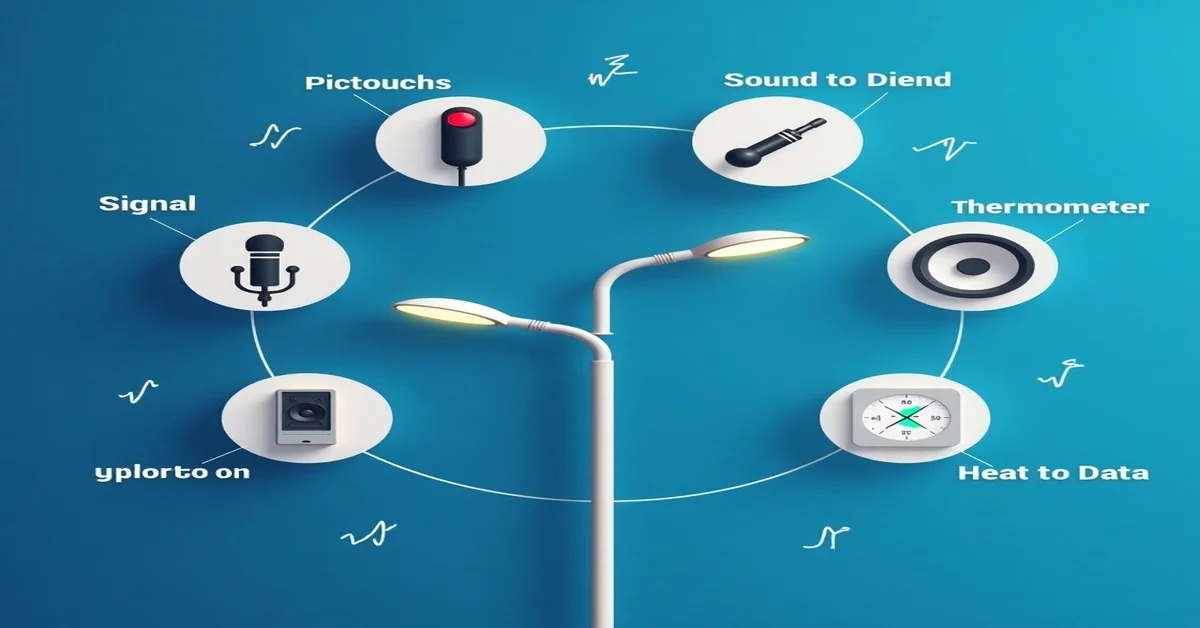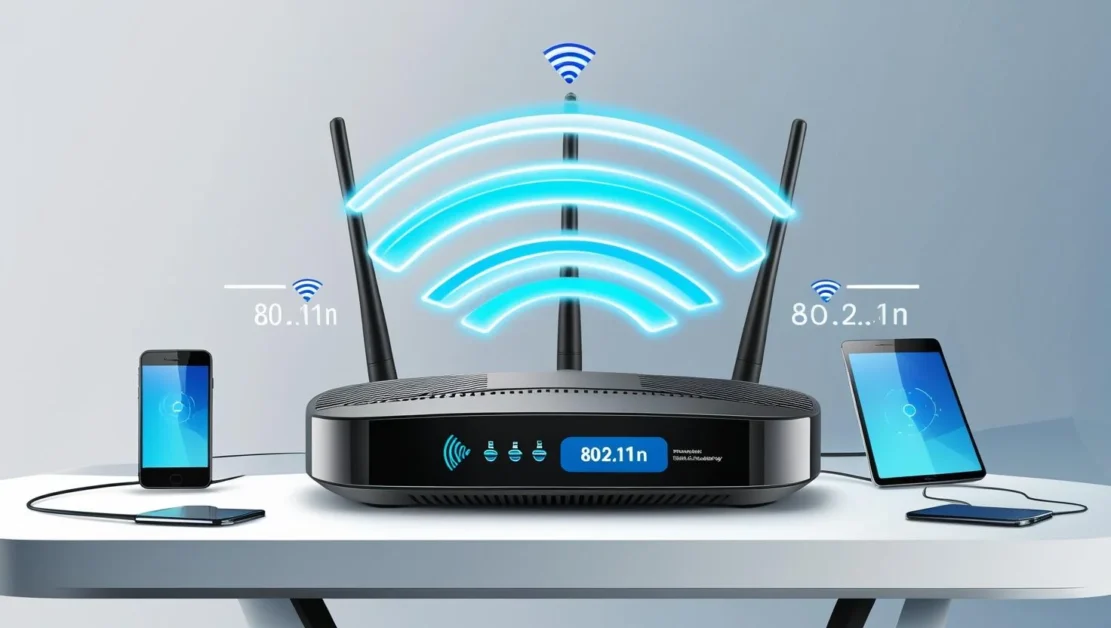People use hundreds of devices that quietly operate behind the scenes to simplify everyday tasks. One of the key components inside many of these machines is known as a transducteur. Although the term may seem technical or unfamiliar, the concept is simple and intriguing. Whether an individual is interested in electronics, beginning an engineering course, or seeking to understand how modern gadgets function, learning about transducteurs provides valuable insight.
Meaning of Transducteur
The word transducteur comes from the French language. In English, it is commonly referred to as a transducer. It denotes any device that converts one form of energy into another simply, energy conversion. Such devices are found in many places: in phones, cars, microwaves, and even in hospital machines.
For example:
- A microphone is a transducer: It transforms sound waves into corresponding electrical signals.
- A speaker is also a transducer: It converts electrical signals into sound.
- A thermometer can be a transducer: It senses heat and converts it into a digital signal that can be easily read.
How Does a Transducteur Work?

Think of a transducteur as a messenger between two types of systems. It takes input from one type of energy and gives output in another form.
Here’s a basic idea:
- Input: The transducteur receives a form of energy like heat, light, pressure, or sound.
- Conversion: Inside the device, that energy is transformed into a different kind, often electrical energy.
- Output: The new form of energy is then sent to a display, processor, or another system for further use.
So, if a sensor notices heat, it changes that into a voltage signal that a machine can read.
Common Types of Transducteurs
There are many types of transducteurs depending on the kind of energy they handle. Let’s look at the most popular ones in our daily life:
1. Electrical Transducteurs
These convert electrical signals into physical output or vice versa.
- Microphones: sound to electrical signals
- Speakers: electrical signals to sound
- Electric motors: electricity to movement
2. Thermal Transducteurs
These deal with temperature.
- Thermocouples: heat to voltage
- Thermistors: temperature to resistance
3. Mechanical Transducteurs
Used for measuring force, pressure, or displacement.
- Strain gauges: pressure to electrical signal
- Load cells: weight to voltage
4. Optical Transducteurs
These handle light.
- Photodiodes: light to electric current
- Solar panels: sunlight to electrical energy
5. Chemical Transducteurs
These detect chemical properties.
- Gas sensors: presence of gases to electric signal
- pH meters: chemical concentration to electric data
Where Are Transducteurs Used?
You might be surprised to know just how common transducteurs are. Here are some simple examples from everyday life:
1. Consumer Electronics
- Mobile phones (touch sensors, microphones, cameras)
- Televisions (remote control receivers, sound systems)
- Smartwatches (heartbeat sensors, light sensors)
2. Home Appliances
- Washing machines (water level sensors)
- Air conditioners (temperature sensors)
- Refrigerators (humidity and temperature control)
3. Automotive Industry
- Parking sensors
- Brake systems (pressure sensors)
- Engine monitoring (temperature and vibration sensors)
4. Healthcare Equipment
- Blood pressure monitors
- ECG machines
- Thermometers
5. Industrial Machines
- Robots with pressure and motion sensors
- Assembly line equipment
- Automation systems
Why Are Transducteurs Important?
Transducteurs are essential components that allow machines to interpret and respond to real-world physical changes. They act like translators that allow physical events to be read and reacted to by machines.
Here are some key benefits:
- Automation: Robots and machines need to sense heat, pressure, or movement to perform tasks correctly.
- Accuracy: They provide precise readings that help control processes.
- Safety: Many safety systems use transducteurs to detect problems like overheating or mechanical failure.
- Efficiency: Systems can run faster and smoother when guided by real-time data.
- Comfort: Smart homes and smart cars adjust lighting, temperature, and sound using these devices.
- Health: Medical machines rely on accurate sensors to check vital signs and send the right signals.
Input vs Output Transducteurs

To better understand how they work, let’s divide transducteurs into two simple categories:
1. Input Transducteurs
These take information from the physical world and convert it into signals machines can use.
Examples:
- Thermometer
- Microphone
- Camera sensor
2. Output Transducteurs
These take signals from machines and turn them into actions or human-readable forms.
Examples:
- Loudspeaker
- Display screen
- Electric motor
Analog vs Digital Transducteurs
Depending on the kind of signal they give or receive, transducteurs can also be:
- Analog: These give continuous signals. For example, the temperature reading changes smoothly as the heat rises.
- Digital: These give signals in steps or specific values. For example, a digital thermometer that shows “98.6°F” directly.
Choosing the Right Transducteur
When engineers choose a transducteur, they consider:
- Type of input/output energy: sound, light, heat, etc.
- Accuracy needed: Is it for industrial use or a simple home device?
- Durability: Will it work outdoors or in rough environments?
- Size and power use: Especially important in smartphones and wearable devices.
- Range: Range refers to the full spectrum of input values a transducteur can accurately detect or process.
- Response Time: How quickly does it react to input changes?
Real-Life Example
Here are simple, everyday examples of transducteurs in action. It has several transducteurs working together:
- Microphone: Picks up your voice
- Touch screen sensor: Detects finger movement
- Accelerometer: Knows if the phone is tilted
- Gyroscope: Measures rotation
- Speaker: Plays sounds back to you
- Microwave oven: Detects how hot the food is
- Street lights: Streetlights automatically switch on when ambient light levels drop, thanks to built-in light-sensitive transducteurs.
- Smartphone screen: Adjusts brightness based on the light around you
- Automatic taps: Use motion sensors to detect your hand
- Smoke alarms: Detect gas particles or temperature changes
Each of these performs a tiny job that adds up to a smart, responsive device.
The Future of Transducteurs
Technology is always improving. Modern transducteurs are becoming:
- Smaller: Fit in tiny devices like smartwatches
- Faster: Give real-time responses
- Smarter: Work with AI to understand patterns
- Wireless: Used in IoT (Internet of Things) gadgets
Emerging trends
- Wireless and battery-free transducteurs
- Transducteurs with built-in artificial intelligence
- Nano-sensors that work at the microscopic level
- Bio-compatible sensors for medical implants
This means transducteurs will continue to be key in smart homes, healthcare, self-driving cars, and more.
Final Thoughts
A transducteur might seem like a small part, but it plays a big role in the way modern machines interact with the world. It’s the link between reality and technology, turning physical changes into useful information or actions. Whether you’re building electronics, learning engineering, or just curious, understanding transducteurs is a great first step into the world of smart machines.



